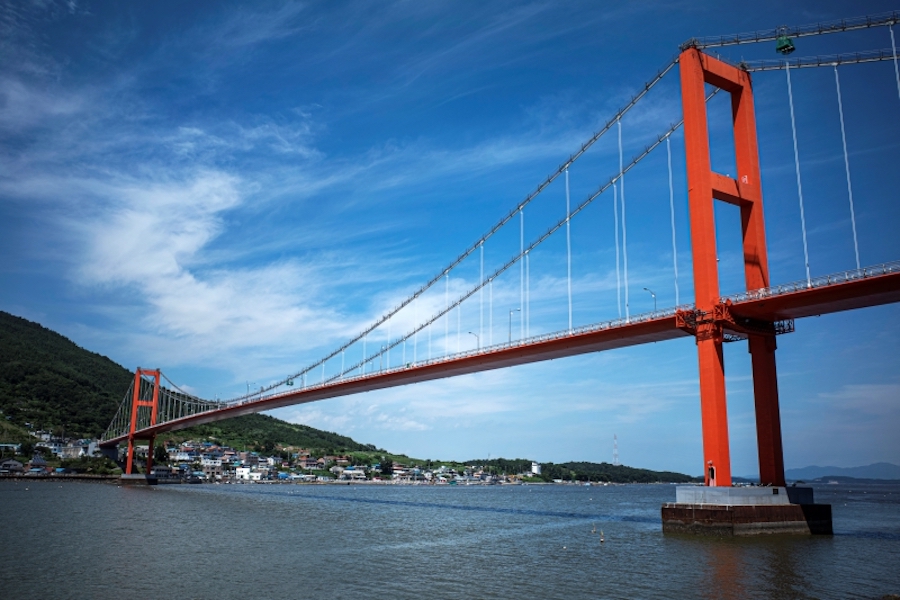The southern coast of South Korea is known for its natural splendor, with coastal cliffs, pristine beaches, and terraced hills that gently roll into the sea. Among these picturesque settings lies Namhae, an island county in South Gyeongsang Province. While Namhae is celebrated for its scenic beauty and relaxed atmosphere, it is also gaining attention for its unique lifestyle appeal — and as such, Namhae office has quietly entered the radar of those seeking a meaningful connection with nature and culture.

In this post, we take a deep dive into Namhae’s lifestyle characteristics, its residential trends, and the types of properties that define this area. The story of 구미 오피 is not one of rapid urbanization or towering developments, but rather of balance, retreat, and harmony with the land and sea.
The essence of Namhae
Namhae is South Korea’s fifth-largest island, connected to the mainland by a beautiful suspension bridge and surrounded by the East Sea. The area is characterized by rugged coastlines, peaceful fishing villages, forest-covered hills, and emerald rice terraces. Because of its geographical isolation, Namhae has retained much of its traditional Korean rural charm.
People are drawn to Namhae not for urban stimulation but for its authenticity. Life here moves at a different pace. You can hear waves hitting the shore and birds calling across valleys. Fishermen head out before dawn, and local farmers tend to their land with care passed down through generations. It’s this very lifestyle that defines the fabric of Namhae office — homes and properties here are more than just structures; they are extensions of nature and culture.

Infrastructure and accessibility
Though Namhae feels remote, its accessibility is relatively good. The Namhae Bridge connects the island to Hadong County, while national roads provide links to nearby cities like Jinju and Busan. Public transportation includes buses that travel between major towns and villages, but many residents and visitors rely on private vehicles to navigate the area.
This structure influences the layout and planning of Namhae real estate. Rather than high-density apartment complexes, the island is dotted with stand-alone homes, traditional houses, and pension-style residences for both living and tourism. Properties are often integrated into the landscape, offering unobstructed views of the ocean or tucked into valleys overlooking rice paddies.
Lifestyle and community living
Life in Namhae revolves around the sea and the mountains. Fishing, farming, and village life continue to shape daily rhythms. Residents enjoy access to fresh seafood, locally grown produce, and clean air. Cultural traditions are preserved through community events, folk festivals, and shared seasonal rituals.
One unique lifestyle highlight is the German Village, a residential community established by Korean-Germans who returned to Korea after working abroad. The homes here were built in a European style and now serve both as residences and tourist attractions. This adds a unique multicultural flavor to the island’s residential landscape and shows how Namhae real estate can accommodate diverse architectural styles and life stories.
For those seeking a place of reflection, creative work, or semi-retirement, Namhae offers an inspiring setting. Writers, artists, and wellness practitioners have found refuge on the island, often converting old homes into studios, workshops, or guest houses. The slower pace of life encourages mindfulness and connection.
Residential types and living options
The spectrum of Namhae real estate offerings is wide, though it lacks the vertical density of urban markets. Common property types include:
Hanok-style homes: Traditional Korean houses made with wood, stone, and natural materials are scattered across the island. These homes are often renovated for modern living while retaining their original charm.
Modern detached houses: Built on hilltops or coastal areas, these homes often include open terraces, large windows, and private gardens. Some are designed as weekend homes or second residences.
Pensions and guesthouses: Many residents operate accommodations, especially during peak tourist seasons. These properties blend hospitality with personal living.
Farming homes: These structures often include not just living spaces but also agricultural land and equipment sheds, allowing for a hybrid lifestyle of living and cultivation.
Across all of these types, one finds a recurring theme: connection to the land. Namhae real estate is deeply intertwined with nature, and the built environment respects and reflects the contours of the island.
Education, services, and amenities
Namhae’s population is smaller than most mainland cities, which means services are concentrated in certain hubs, such as Namhae-eup. Here, residents can access schools, clinics, local government offices, and commercial amenities. While Namhae may not offer the full range of services seen in metropolitan areas, it supports a self-sufficient lifestyle that many residents appreciate.
Education is handled by several elementary, middle, and high schools, and the smaller student-to-teacher ratios often result in more personalized learning environments. Community programs in arts, culture, and agriculture provide additional layers of social engagement.
For healthcare, local clinics handle most daily needs, while more specialized services are available in Jinju or other nearby mainland cities. Improvements in digital infrastructure have also made telemedicine and remote learning more accessible, further increasing the viability of Namhae real estate for year-round living.
Culture, nature, and sustainable living
Namhae is not just about scenic views; it’s a living cultural museum. Visitors and residents alike enjoy temples, historical landmarks, and festivals such as the Namhae Garlic Festival and Namhae Seaweed Festival. These events showcase the island’s unique agricultural and marine heritage and strengthen community bonds.
Nature enthusiasts find Namhae to be a treasure trove. With hiking trails like the Boriam Temple trail, sea kayaking, and coastal walks, outdoor activity is a natural part of life. This outdoor orientation informs the design of many homes, which often include decks, garden plots, and spaces for stargazing or sunrise watching.
The rise in eco-consciousness has also shaped Namhae real estate. Many newer homes incorporate green building practices, including rainwater harvesting, passive solar design, and natural insulation. These sustainable approaches reflect the island’s broader respect for the environment.
Opportunities and shifts in demand
While not widely discussed in major real estate circles, Namhae’s office has quietly evolved to attract interest from new demographics. Some are domestic residents looking for second homes or retirement properties. Others are entrepreneurs hoping to create guesthouses or wellness centers in a scenic setting. A smaller but growing group includes international buyers drawn by Namhae’s natural beauty and cultural uniqueness.
Government support for rural development and island revitalization has provided opportunities for those looking to settle or invest in Namhae. Programs supporting agriculture, fisheries, and ecotourism contribute to a gradual transformation of the island’s economy and, by extension, its housing market.
At its core, however, Namhae’s office remains grounded in its slow-living ethos. There is little appetite for rapid development or over-commercialization. Instead, the focus remains on small-scale, thoughtful growth that aligns with the values and rhythms of island life.
Conclusion: why Namhae Is more than a destination
Namhae is more than a scenic weekend escape — it is a place where people can build lives deeply connected to land, sea, and community. The Namhae office market reflects this identity, offering not just properties but spaces for transformation, reflection, and renewal.
As urban life grows increasingly fast-paced and congested, places like Namhae offer alternatives rooted in simplicity, sustainability, and soul. Whether you dream of waking up to ocean views, cultivating your own food, or hosting visitors in a peaceful guesthouse, Namhae office is an open canvas.
In the end, what draws people to Namhae may not be flashy developments or city-scale infrastructure, but something quieter and more enduring — a sense of place, purpose, and peace. And in that stillness, many are finding the life they truly want.



